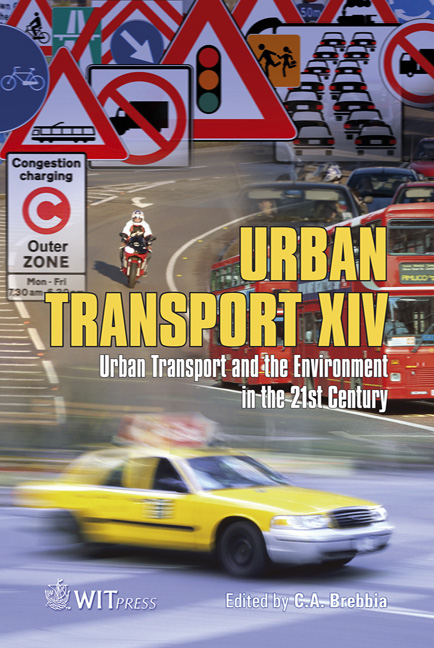Evaluation Of Shared Use Of Bicycles And Pedestrians In Japan
Price
Free (open access)
Transaction
Volume
101
Pages
10
Page Range
47 - 56
Published
2008
Size
1017 kb
Paper DOI
10.2495/UT080051
Copyright
WIT Press
Author(s)
P. Zhe, H. Yamanaka & K. Kakihara
Abstract
Shared use of bicycles and pedestrians on sidewalks can be commonly seen all over Japan. Cycling on sidewalks in Japan was permitted from 1978 following deregulation of the Road Traffic Law, which was urgent treatment to secure cyclists’ safety due to a lack of road space. This was permitted on sidewalks with appropriate width and traffic conditions. Although bicycles are still regarded as a vehicle and cyclists have to use the carriageway along with motor vehicles according to the Road Traffic Law, many bicycle users prefer to use sidewalks. Cycle/pedestrian shared use would surely be disadvantageous related to the safety and amenity of pedestrians, and to the reduction of cycling speed. Shared use with pedestrians, however, has advantages of safety and freedom for utility cyclists, which seems to be related to the fact that Japan has a high level of the modal share of bicycles used for going shopping or to school. In addition, the number of women or aged users tends to be high compared with major motorized countries. The aim of this study is to evaluate the level-of-service of shared use by pedestrians and bicycles, from the viewpoints of users’ safety and comfort considering traffic volume in shared use space. By using a video survey of shared use streets, the authors analyzed the relationship between cycling speed, frequency of hindrance and traffic density or traffic volume of street users. In conclusion, the author proposes the conditions necessary to apply shared use of bicycles and pedestrians on the sidewalks, considering the traffic flow of pedestrians and bicycles per width of sidewalks Keywords: bicycle, shared use, level-of-service, Japan.
Keywords
bicycle, shared use, level-of-service, Japan.





